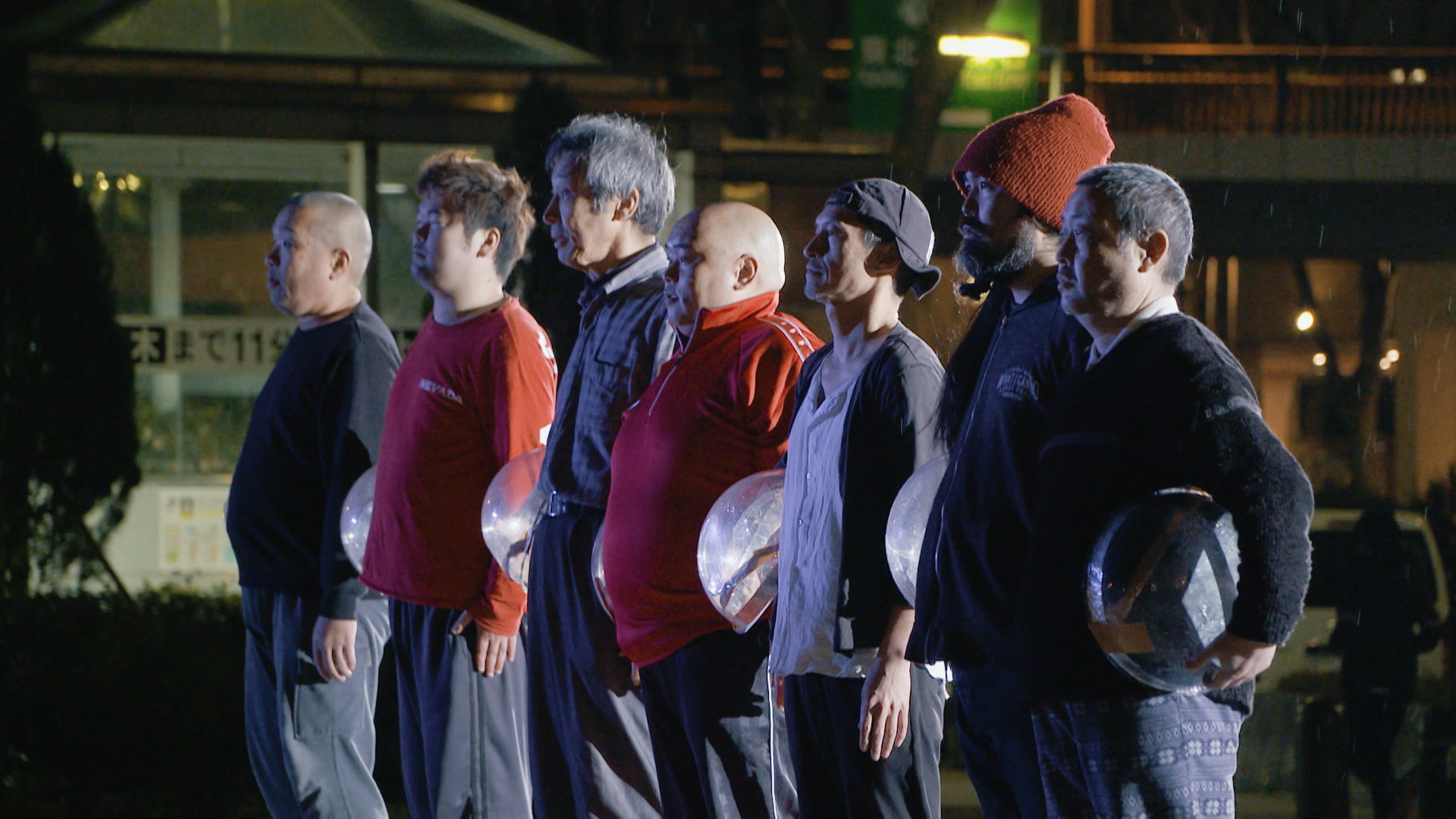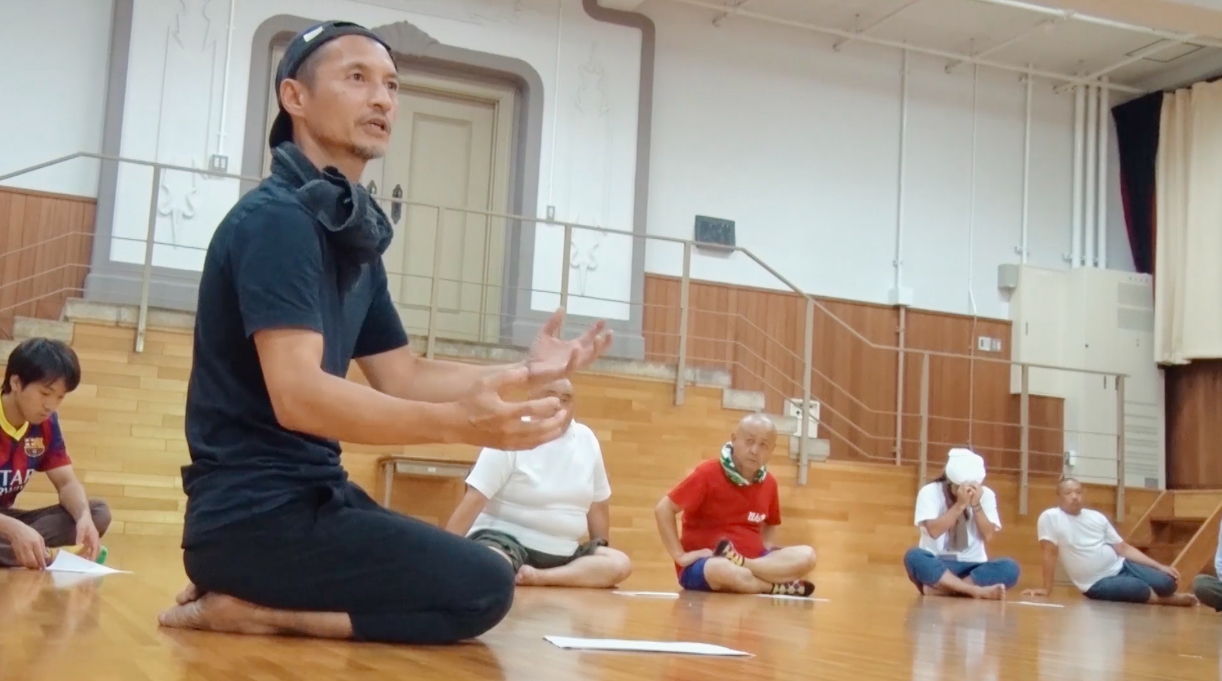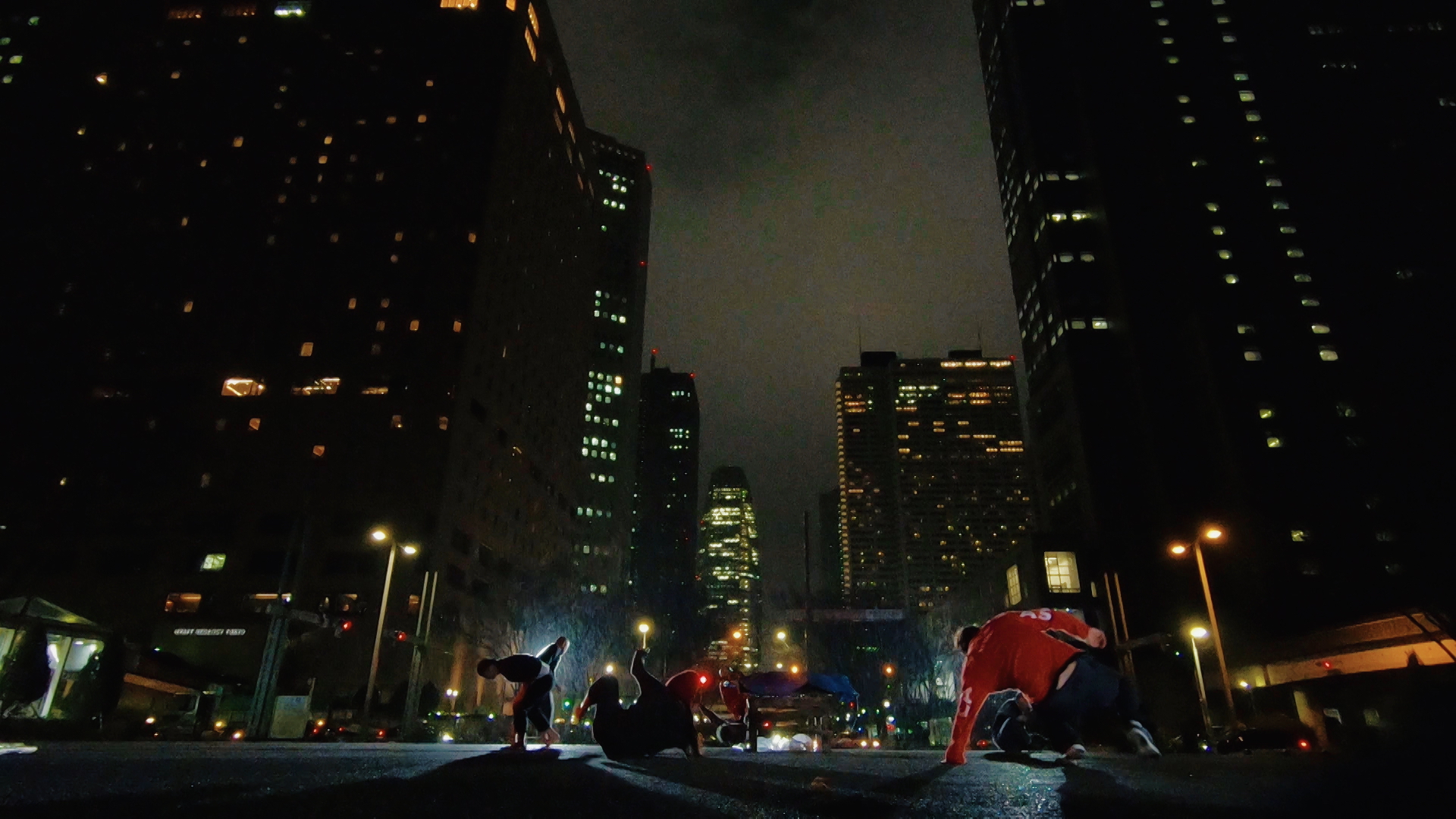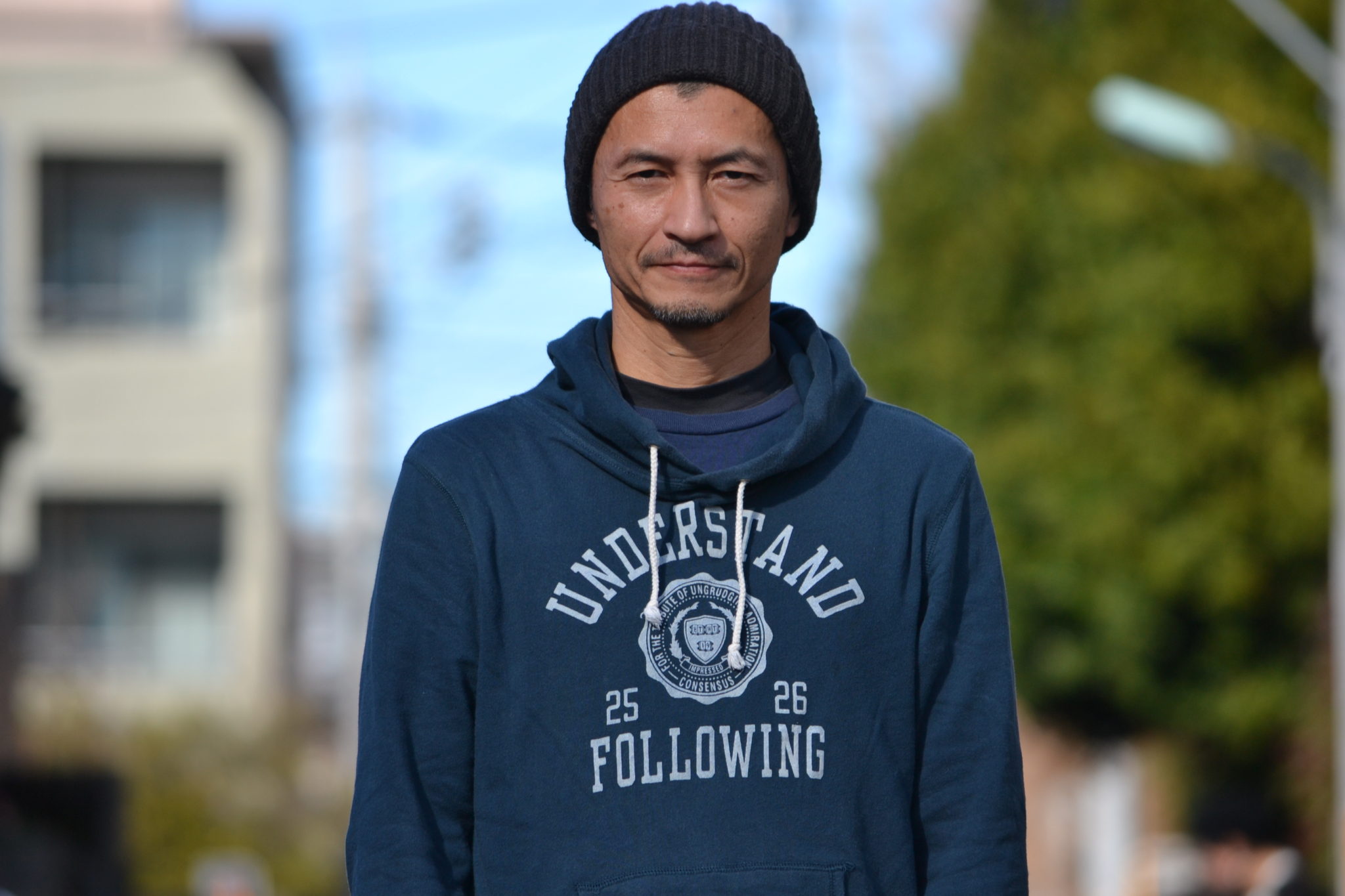Runs an advertisement production company, while also being active as a writer and interviewer in the fields of music, cinema and dance. He is the director of “LAND FES,” an event revolving around improvised sessions with dancers and musicians while wandering through the streets, and is involved in the planning and implementation of workshops and other events for handicapped children.
Interview with dancer/choreographer Yuki Aoki (head of Newcomer H Sokerissa!) commemorating the release of the documentary movie “The Dancing Homeless”
Newcomer H Sokerissa! (below abbreviated “Sokerissa!”), a dance company whose members have all experienced life on the street, has been operating for 15 years since its formation in 2005 by dancer/choreographer Yuki Aoki. Coming to movie theaters on March 7 will be the documentary movie “The Dancing Homeless” (direction & photography by Wataru Miura), which portrays the protagonists’ individual lifestyles, and their dance that is sincere yet at the same time also somewhat humorous and pathetic. While the Olympic Games are just around the corner, and people promote the importance of diversity, the situation on Tokyo’s streets is anything but rosy for social minorities. Here we see a bunch of “gentlemen” who have been living under such circumstances, and now put their bodies and souls into their dance, captured and raised to an unusual kind of position in a film that is neither a serious dance movie nor a plain documentary about homeless people. I met Aoki to talk to him about his thoughts and feelings during his work dancing and filming with the “gentlemen,” about the work of Sokerissa!, and about the present and the future of the “gentlemen” as well as Aoki himself.
Learning about their backgrounds for the first time
ーStarting with the solo dance scene that opens the movie, the movie captures the vibrant character of the dancers’ movements and their bodies in a truly impressive way. On the other hand, quite obviously considering that this is a documentary, a large part of the movie is dedicated to descriptions of the personal histories and daily lives of the protagonists that have all experienced life on the street. I think that witnessing their dance is something that may cause viewers to watch the movie with some kind of preconception. Was that an issue for you and the dancers during the filming?
Aoki: We talked a lot with the director as to how to avoid making it a woeful story about homeless people. For myself, the actual “dance” is the most important element in our connection, so on a daily basis I rarely talk to them about their backgrounds. During the making of the movie, it happened that I heard stories regarding their backgrounds that I’d never heard before.
But for the general public that’s certainly something that people who watch the movie want to know, and also regarding the balance of the movie as a whole, I understand the director’s decision to cover these things as well. I think the outcome is a movie that was edited based on a proper understanding of the protagonists’ personalities, and divided up while steering clear of silly egalitarianism.
Mr. Hirakawa, a dancer I’ve been working with for a long time, plays a palliative kind of role in the scenes that especially focus on his own funny habits, and Mr. Nishi, who initially aspired to a career as a dancer but eventually dropped out, shows some really solid dancing skills. It appears to me that the director was quite aware of these things during the shooting.
ーWhat were your thoughts when you watched the finished movie?
Aoki: I’ve been working with the gentlemen for quite a while already, and all kinds of things that we do including the dancing has become totally natural for us, so frankly speaking, even when I watched the finished movie, I couldn’t really imagine how other people might react to it. For me personally, it’s a movie that I could watch time and again, because I just can’t stop thinking that these gentlemen show some pretty cool dancing.

©Tokyo Video Center
As long as there is trust, people can go their own ways
ーThere is a scene in the movie where you are asked about the way you run Sokerissa!, and you reply by asking whether the rules of society are alright as they are. The style of Sokerissa! is very unique in that you totally respect the dancers’ discretion and lifestyles, and not tie them to any rules. But on the other hand, the management of an organization certainly also involves a lot of difficulties. What kind of attitude do you assume when you approach the members for the creation of a piece?
Aoki: As for myself, I’m not thinking much about such things as what each of these gentlemen may be doing in the future. If they continue living on the street, I’m fine with that. As soon as there’s some kind of vision of “how things should work out for them in the future,” I think the performance will get kind of loose. If we take dance as a “vehicle to a possible future,” it will always become a gentle, or rather, dull kind of art. That’s not what dance is about. Sometimes it hurts, and there are situations in which dancers need to express something that causes them great pain. However there’s of course also a lot of love in that.
What I treasure more than anything else is trust. People create rules out of mistrust. There are more and more rules, and the result of that is a society of rules as we have it today. Just because we’re living in times like these, I think that trust is an immensely important thing. As long as there is trust, people will always somehow manage to go their own ways.
Mr. Nishi, for example, explains that he is living on the street because it’s the only way for him to be himself (that statement is also included in the trailer), and I understand that very well. He has been living his life without making any choice of his own, which is also how his family are seeing it, and he eventually got fed up with that and deliberately chose to live on the street. His current lifestyle allows him to make any choice by himself, and there’s a firm “individuality” that is at work here. As a matter of fact, I believe that this could be a strong message to all those people out there who have lost their “individuality” and run around without knowing what they really want. So what I’d like to encourage these people to do is live their own lives, and if they fall, get up again and make a new start, and I’ll be happy to just be there and move ahead with them.
ーIs it true that it happened several times in the past that a central member of your team didn’t show up for a performance?
Aoki: That’s right. It was quite a shock at first, but then I realized that I can jump in and dance whenever someone’s missing, and now the thought that we might have to make it work that way is part of our preparations right from the start. We incorporate such processes in a way that it’s all visible also to the audience. It’s actually a rather important part of our work, and I hope that people will understand this as one aspect that makes our company so unique and interesting.

©Tokyo Video Center
Real dance potential in real bodies
ーYou come from a rather commercial background yourself, with quite some experience doing choreographies for backing dancers and famous artists. Where did that idea, that making an about-turn and working with homeless people would result in some exciting dance, come from?
Aoki: When you’re involved with dance, you always look at the properly trained, well-shaped bodies of dancers. With these gentlemen, it’s completely different. Their bodies are totally real and connected to life. They are primitive bodies so to speak, and I was convinced that they must be bursting with energy when they dance.
People who sleep outside know things like fear and cold, and as they wake up with birds singing around them, they develop a kind of sensibility that is closely connected to nature. I, on the other hand, am living in a comfortable environment where I can easily switch on the light, and I don’t have to worry about anything when I go to bed at night, but it appears to me that such kind of lifestyle paralyzes your senses in that respect. I feel that a body and senses that have been exposed to harsh environments are things that are necessary not only for me personally, but for today’s human society at large.
ーThe movie itself can also be understood as a discourse on cities in general, from the viewpoint of the streets of Tokyo. There are millions living in functional and comfortable ways, but there are also those that stick out from the masses, whereas the exposed primitive aspects of their lifestyles are again part of what defines big city life. Both extremes normally just exist alongside one another without mixing, so was it important for you as someone who knows the “comfortable life in Tokyo” to mix with these people?
Aoki: Absolutely. I wanted to mix with them, and I also wanted to highlight the contrast between professional dancers and people living on the street. I’m constantly thinking about how to present those highly unique bodies with all their various uncertainties. The very fact that they are always just “themselves” no matter where in the city they dance will surely be, let’s say, inspiring for people in one way or another, and for the gentlemen themselves, this chance to inspire others is an extremely positive effect as well.
Take them to India and dance together
ーThe movie contains a lot of scenes from actual dance performances. Why is it that so many of these performances take place under the open sky?
Aoki: When the shootings were scheduled, we happened to be in the middle of a tour dancing at outdoor locations across the city for about a year from 2017 (the “Tokyo Road Dance ‘Daily Wilderness’ tour”). We did of course have opportunities to perform at venues with sound and lighting equipment, but other homeless people and members of the general public that normally don’t watch dance rarely got the chance to come and see us at such venues, so we eventually decided to raise funds independently and do those outdoor performances.
ーSo performing outside wasn’t imperative?
Aoki: No. But for the gentlemen it is a rather real and familiar environment, so it naturally turns out more interesting. As a matter of course, there are passersby that don’t even take notice, but there are also those who stand around and make a big noise. Also for myself, I feel that dancing in such kind of environment of all places is extremely important.
ーEach of the dancers seems to be doing his thing with great enthusiasm, even in the rain.
Aoki: We filmed at 15 outdoor locations, and it actually rained quite often. When we started filming the final dance scene, the weather was fine, but right when the dance began, it suddenly started raining. That also happened during the opening scene. We did prefer fair weather of course, but as they all don’t even mind rolling in the mud, none of them complained. Isn’t that great!
ーPlease tell me about your future plans.
Aoki: We already have some performances scheduled, and if we manage to get enough money together after that, we’d like to go to the UK. There is a group called Streetwise Opera, who combine efforts in the realms of opera and support of homeless people, and the idea is to get together for collaborations and street performances. That’s one thing, but even more than that, I’d really love to take the gentlemen to a country with a lot of people that are even poorer than they are. Places in India or Africa for example. I’ve made a very intense experience dancing in India in the past, and I’d love to go there again with the gentlemen, dance with them, and see what all of us can get out of that emotionally.

©Tokyo Video Center
Yuki Aoki
Dancer/choreographer, born in Hyogo. Began to study jazz dance under Akemi Hirata in Tokyo in 1987. After working as a dancer in amusement parks and as a backing dancer for various stage celebrities, he witnessed the terrorist attacks in 2001 while studying in New York, which inspired him to review his own work as a dancer. In 2005, in cooperation with the Big Issue Japan Foundation, he summoned a group of homeless people, and established the dance group Newcomer H Sokerissa! Their language-based choreographies, and dance performances based on individual physical memories that are unique to each performer, enjoy a high reputation within rehabilitation programs for the socially weak, and also as an alternative approach to dance education. Aoki won a NEXTREAM21 Award in 2004, and is currently also president of Aokikaku.

©Makoto Ando
INFORMATION
The Dancing Homeless
Shown from March 7 at Theater Image Forum and other cinemas across Japan. Distribution: Tokyo Video Center









